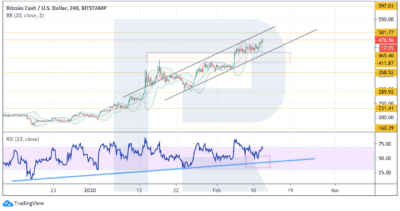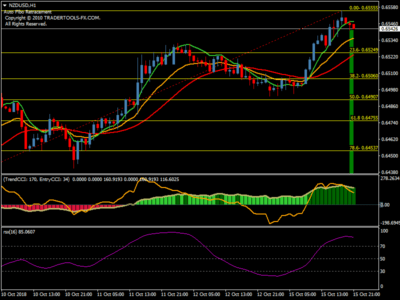Contents:

The attached file contains this articles commentary as well as tables and charts of the data. The gain was in line with the median forecast of economists surveyed by the Wall Street Journal. China has stuck by its zero-COVID policy amid a rise in COVID-19 cases in recent weeks. At the same time, the Commerce Department is expected to say factory orders bounced 0.7% in October, above September’s 0.3% rise. The Federal Reserve’s fastest cycle of interest rate hikes since the 1980s, aimed at fighting inflation, is undercutting demand for goods, which are mostly bought on credit. We introduce people to the world of trading currencies, both fiat and crypto, through our non-drowsy educational content and tools.

Durable-goods orders https://day-trading.info/ a revised 1.1% in October compared with the initial estimate of a 1% gain. Economists surveyed by the Wall Street Journal were expecting a gain of 0.7%. Create an account or sign in to continue with your reading experience. The Federal Reserve’s fastest cycle of interest rate hikes since the 1980s, aimed at fighting inflation, is undercutting demand for goods, which are mostly bought on credit. The survey is sent on the first day of each month to the same pool of about 200 manufacturing executives in New York State, typically the president or CEO. Most are completed by the tenth, although surveys are accepted until the fifteenth.
The rebound in factory orders in December was driven by a 16.9% jump in https://forexhistory.info/ equipment, which followed a 5.2% drop in November. Transportation equipment orders were boosted by a 115.5% surge in orders for civilian aircraft. The Commerce Department said on Friday new orders for manufactured goods increased 1.1 percent. February’s orders were revised to show a 1.5 percent rise instead of the previously reported 1.6 percent gain. An economic indicator that reports the dollar level of new factory orders for both durable and non-durable goods. The factory orders report is released monthly by the Census Bureau of the U.S.
Investors should not get too worked up about this data since this should greatly rebound in the next monthly report given the recent sharp gains for auto sales. In June, orders for transportation equipment increased 2.1 percent, boosted by a 4.2 percent jump in the volatile orders for civilian aircraft. Clients and prospects are advised to carefully consider the opinions and analysis offered in the blogs or other information sources in the context of the client or prospect’s individual analysis and decision making. None of the blogs or other sources of information is to be considered as constituting a track record.
https://forexanalytics.info/ of Commerce one or two weeks following the durable goods orders report. The Institute for Supply Management survey this week showed its measure of the country’s factory activity contracted for a second straight month in December. Once again, the transportation equipment sector drove the overall increase in shipments for December, rising 1.7% for the month to $93.8 billion. If transportation equipment shipments are removed from the equation, durable goods shipments contracted by -0.1%.
The New York Fed has been working with tri-party repo market participants to make changes to improve the resiliency of the market to financial stress. Friday data also includes readings on the services sector and factory orders. ADP’s private payroll data was stronger than expected, and new unemployment claims were lower than expected. That is good for workers, but investors interpreted the trend as encouraging the Federal Reserve to keep interest rates higher for longer.
Market Data
We provide a platform for our authors to report on investments fairly, accurately, and from the investor’s point of view. We also respect individual opinions––they represent the unvarnished thinking of our people and exacting analysis of our research processes. Our authors can publish views that we may or may not agree with, but they show their work, distinguish facts from opinions, and make sure their analysis is clear and in no way misleading or deceptive. The factory sector, which led the economy’s recovery from the pandemic, has started to struggle. A key gauge that looks ahead, the national ISM manufacturing index, has slipped into contractionary territory in November.

We do this by executing monetary policy, providing financial services, supervising banks and conducting research and providing expertise on issues that impact the nation and communities we serve. • As customer inventories fall below 50 for the second straight month, they will need to restock. Some U.S. companies have signaled plans to shift away from China. Apple is planning to pivot some production elsewhere in Asia, such as India and Vietnam, the Wall Street Journal reported on Saturday. “The adverse reaction to the nonfarm payroll numbers sits in that counterintuitive world of good news is bad news as it pertains to what the Fed might have to do,” said Art Hogan, chief market strategist at B Riley Wealth Management. “To me, that’s always a mistake and likely will alleviate next week.”
United States Factory OrdersFebruary 2023 Data – 1991-2022 Historical
When factory orders increase, it usually means the economy is expanding as consumers demand more goods and services, which in turn requires retailers and suppliers to order more supplies from factories. Swings in aircraft orders were actually not responsible for distorting the data this time. The ex-transportation reading was down by 0.8% following a 0.7% decline in July, implying that the overall weakness was quite widespread. Because the performance of the economy has a large effect on the performance of the investment markets, it is important for investors to monitor indicators such as the Factory Orders to provide insight into growth trends. There were moderate gains in orders for machinery, computer and electronic products as well as electrical equipment, instruments and components. Overall transportation equipment orders increased by $15.5 billion to $108.1 billion in December.
The exception was in November, when there was a 1.7% decrease, according to the U.S. Census Bureau’s latestmonthly data on economic conditions in the domestic manufacturing sector. Orders for nondefense capital goods, excluding aircraft fell a revised 0.4% in September up from the initial estimate of a 0.7% drop. September’s increase in factory orders largely reflected a 2.2% advance in bookings for transportation equipment, which followed a 0.5% rise in August. Transportation equipment orders were boosted by a 21.9% rebound in civilian aircraft.
Factory orders are released monthly in a report by the Census Bureau of the U.S. The full name of the report is “Full Report on Manufacturers’ Shipments, Inventories and Orders ,” but it is more commonly known as Factory Orders. Factory orders report is compiled from results of “Manufacturers’ Shipments, Inventories, and Orders survey” and shows the value of new factory orders for both durable (50% of total orders) and non-durable goods. The survey is usually released a week after durable goods orders report.
U.S. services industry regains steam; factory orders accelerate – Reuters
U.S. services industry regains steam; factory orders accelerate.
Posted: Mon, 05 Dec 2022 08:00:00 GMT [source]
New orders for US manufactured goods rose by 1 percent in October of 2022, following a 0.3 percent increase in the prior month and above market expectations of a 0.7 percent gain. Also, demand for non-durable goods advanced 1 percent, up from a 0.3 percent increase. Excluding transportation, factory orders went up 0.8 percent (vs 0.1 percent).
Business
Bloomberg The Open Jonathan Ferro drives you through the market moving events from around the world on Bloomberg’s The Open. 60 minutes featuring the brightest minds on Wall Street, taking you through the most important hour of the trading day. Transparency is how we protect the integrity of our work and keep empowering investors to achieve their goals and dreams. And we have unwavering standards for how we keep that integrity intact, from our research and data to our policies on content and your personal data.
- The general business conditions index climbed twenty-seven points but held below zero at -5.8.
- It was the fourth straight 75-basis-point rate hike as the Fed fights to bring inflation back to its 2% target.
- The rebound in factory orders in December was driven by a 16.9% jump in bookings for transportation equipment, which followed a 5.2% drop in November.
- Investopedia requires writers to use primary sources to support their work.
• These are all indicators of consumer demand and its effect upon GDP . Swiss officials will activate each tier and level based on supply level. At the very minimum, buildings will only be able to be heated to 20 degrees Celsius.
The main benefit of the Factory Orders Report is in its provision of forward-looking data on new business and inventory levels, which may point toward future earning periods. It is valuable for manufacturing firms and investors as they prepare and receive upcoming earnings statements. This is a lagging indicator and usually arrives too late to have any drastic effect on the stock market. The Factory Orders Report is useful for projecting future economic output levels and is used to actually estimate the GDP itself. Non-durable manufacturing industries may move as a group when this report is released because of investor activity.
High-Risk Stocks to Avoid
The information in the report specifically concerning factory inventories is the real first glimpse into the inventory picture each month with separate inventories due to be issued for the disparate industries. Wholesales inventories, for example, typically are released at the following week, with retail inventories released a few days after that. The ISM manufacturing index, also known as the purchasing managers’ index , is a monthly indicator of economic activity based on a survey. Core durable goods orders refers to new orders for U.S. core durable goods, which are the total durable goods orders excluding transportation equipment. Unfilled orders rose 0.6 percent and shipments increased 0.3 percent. WASHINGTON – New orders for U.S. factory goods rose for a second straight month in March, suggesting strength in manufacturing and the broader economy at the end of the first quarter.
Reuters, the news and media division of Thomson Reuters, is the world’s largest multimedia news provider, reaching billions of people worldwide every day. Reuters provides business, financial, national and international news to professionals via desktop terminals, the world’s media organizations, industry events and directly to consumers. WASHINGTON, Feb 2 – New orders for U.S.-manufactured goods rebounded in December, but higher interest rates are weighing on business spending on equipment, which could keep manufacturing under pressure. The Employment Situation report provides insight into the U.S. job market such as the monthly change in nonfarm payrolls and the unemployment rate.
Orders for electrical equipment, appliances and components rebounded 1.6%. Orders for machinery rose as did those for primary metal products. August’s factory orders were restrained by a 1.1% drop in orders for transportation equipment, which reflected a 18.5% plunge in bookings for civilian aircraft. Durable goods orders declined by 0.1%, as previously reported, while nondurable goods orders slipped by 1.9%. Excluding orders for defense goods, civilian aircraft and petroleum products, core factory orders were unchanged. Intraday Data provided by FACTSET and subject to terms of use.
I/we have no positions in any stocks mentioned, and no plans to initiate any positions within the next 72 hours. Orders for appliances, computers, cars and other durable goods increased in August, though factory operators continued to confront parts and labor shortages as well as higher material costs. © 2022 biz.crast.net – The latest Business and financial news. To further protect the integrity of our editorial content, we keep a strict separation between our sales teams and authors to remove any pressure or influence on our analyses and research. Verify your identity, personalize the content you receive, or create and administer your account.
While high inventory levels are still an iffy point of contention, it does not appear that there will be much reprieve for the factory sector in September, nor for shares of the Industrial Select Sector SPDR ETF . For the time being, global industrial weakness and the Fed’s inaction on interest rates are far bigger market movers in the industrial sector. Factory orders increased by an unrevised 0.4 percent in May.June’s rise in factory orders was in line with economists’ expectations. Figures within the Factory Orders report are reported in the billions of dollars. They are also reported in a percent change from the previous month. The Federal Reserve’s sharpest interest-rate-hike cycle since the 1980s as it battles inflation is slowing demand for goods, which are typically bought on credit.
US factory orders for October 1.0% versus 0.7% estimate
A survey from the Institute for Supply Management early this week showed its manufacturing PMI fell to its lowest level in nearly 2-1/2 years in October, with new orders remaining subdued. Comments from manufacturers ranged from “customers are canceling some orders,” to orders slowing “substantially.” The Commerce Department said on Thursday that factory orders rose 0.3% after gaining 0.2% in August.

The Factory Orders report is not as widely watched compared to other economic releases. The Advance Release on Durable Goods which precedes the Factory Orders report by one week gets more attention. This is because the durable goods figure is more than half of factory orders figure. The Financial Accounting Standards Board sets accounting and financial reporting standards, while sustainability reporting… The Commerce Department said on Friday that factory orders fell 1.8% after rising 0.4% in October. In November, orders increased by 12.2% on a year-on-year basis.
Leave a Reply